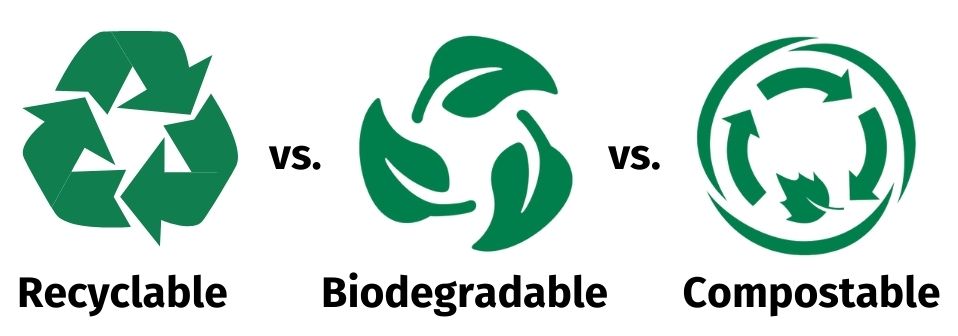Understanding the Environmental Impact of Different Plastics
Plastics are an essential part of modern life, found in everything from food packaging to industrial components. However, not all plastics are created equal, and their environmental impact varies significantly. In this blog post, we’ll explore the differences between four types of plastics: degradable, compostable, biodegradable and non-biodegradable.

Figure 1: Three kinds of plastic
- Degradable Plastics
Degradable plastics break down into smaller fragments under certain conditions, like exposure to sunlight or heat. While this process can reduce the overall volume of plastic waste, the extent of decomposition varies depending on the type of plastic and environmental conditions. In many cases, degradable plastics can break down into microplastics, which pose a significant risk to wildlife and ecosystems. However, some degradable plastics may degrade more fully under the right conditions, minimizing the presence of harmful microplastics. - Compostable Plastics
Compostable plastics are designed to break down completely into non-toxic components such as water, carbon dioxide, and biomass under specific composting conditions. This makes them an eco-friendly alternative, especially when properly managed in industrial composting facilities. However, if not disposed of correctly, they may not decompose as intended, potentially contributing to environmental pollution. - Biodegradable Plastics
Biodegradable plastics are capable of being broken down by microorganisms into natural substances like water and carbon dioxide. This process helps reduce environmental pollution and lessens the burden on landfills. However, the degradation process can be slow, depending on environmental factors such as temperature and humidity.
- Non-Biodegradable Plastics
Non-biodegradable plastics do not break down naturally and can persist in the environment for hundreds or even thousands of years. These plastics contribute significantly to long-term pollution, including the accumulation of plastic waste in oceans and landfills.
The Role of Microplastics
Microplastics, tiny particles formed from the breakdown of larger plastic items, are a growing environmental concern. They can be ingested by marine life and enter the food chain, potentially harming both animals and humans. The likelihood of microplastic formation depends on the type of plastic, with degradable and non-biodegradable plastics posing a higher risk. When evaluating different types of plastics—degradable, compostable, and biodegradable—it’s essential to highlight that environmental conditions play a critical role in how effectively these materials break down. Factors like temperature, humidity, and sunlight significantly influence whether plastics decompose fully or leave behind harmful residues like microplastics. Understanding this relationship is key to making environmentally responsible choices in plastic use and disposal.
Envirowise’s Commitment to Sustainability
At Envirowise, we are deeply committed to reducing plastic usage, eliminating microplastics, and finding truly sustainable alternatives that simplify life. Through Life Cycle Impact Assessment (LCIA) analyses, we carefully evaluate the environmental footprint of materials and processes. This approach ensures that our solutions are not only eco-friendly but also practical and easy to implement, making sustainability accessible for everyone.
Understanding the different types of plastics and their environmental impacts is crucial for making informed choices. While biodegradable and compostable plastics offer more sustainable options, proper disposal is essential to maximize their benefits. By choosing the right type of plastic for each application and managing waste responsibly, we can reduce pollution and move towards a more sustainable future.
